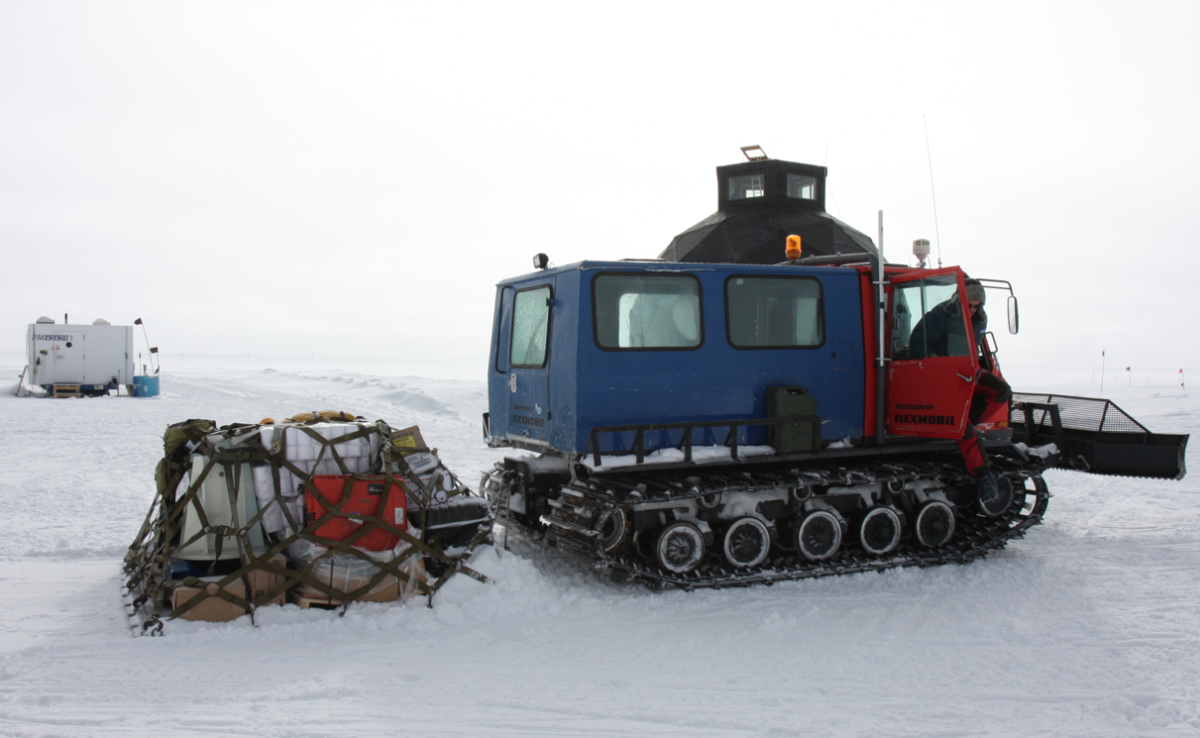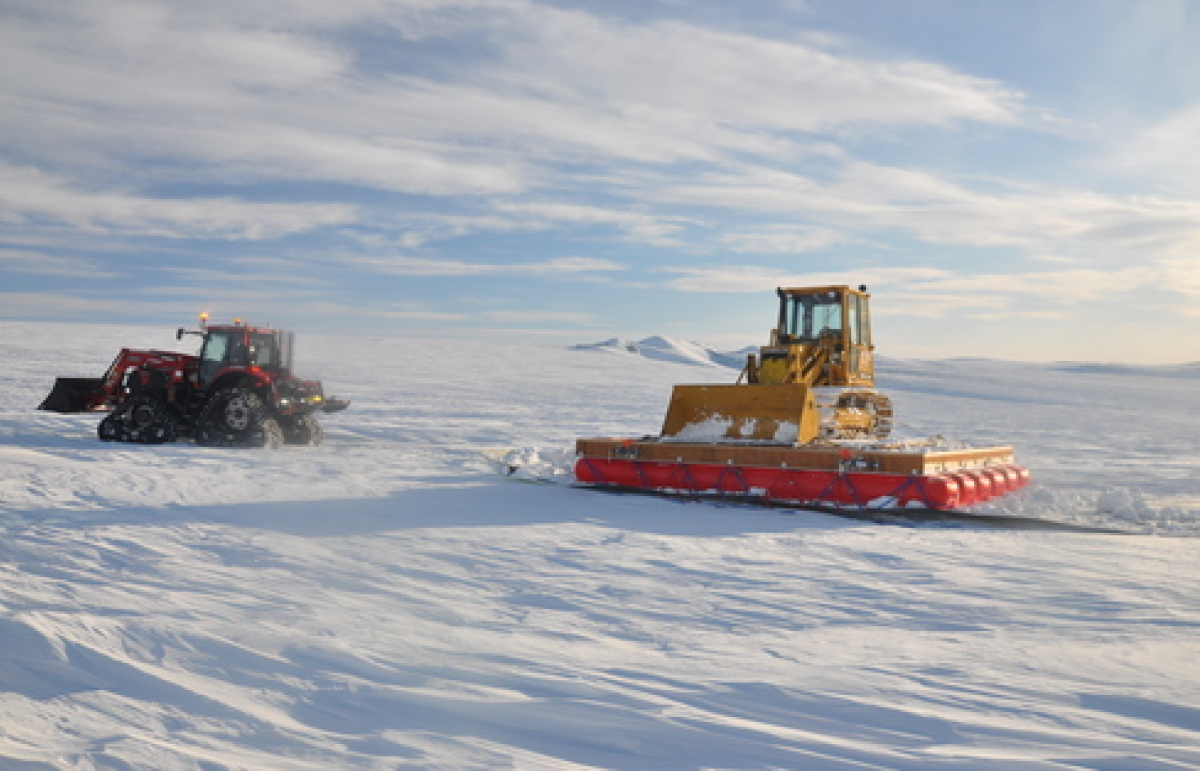I just got an email from our customer Hans Christian Steen-Larsen who is at NEEM:
"Greetings from NEEM where I'm setting up my vapor system once again. This time I have the Picarro from France - the serial number is HBDS012. The good things was that the analyzer started up right away after having been combat off-loaded on the put in flight (open snow landing)."
"Open-snow landing" means they land the plane on whatever is there -- since nobody is at NEEM during the winter, the first landing is pretty daunting because the runway hasn't been groomed yet by the snow machines. "Combat off-loaded" means they shove the palette (containing the analyzer) out of the back of the airplane while it's still moving -- a rough ride for what's on the palettes -- if you're lucky, they don't tip over in the process.
More of their "field diaries" with pictures are here: http://neem.dk/field_diaries/field_diaries_2012/
In the mission tracker link below are some other incredible pictures of the "traverse" tractors that drag all the heavy stuff that can't be flown in each year to NEEM and Summit stations (see the real-time mission tracker here: http://www.datatransport.org/grit/ ). The "traverse" goes from Thule airbase on the coast, through NEEM, to Summit camp (we have an instrument semi-permanently at Summit station). This 1000km trek takes several days (traveling at about 15km/hr and generally driving in shifts, stopping only occasionally) and they have giant sleds with fuel and other large, heavy things, pulled by giant snow cat tractors. As they climb up onto the ice sheet from sea level at Thule, they have to avoid falling into crevasses in the ice, so they have radar penetrating the ice in front of them to detect any crevasses. Supporting the Greenland science operations is an amazing logistical challenge. Each summer, we probably have between 5 and 10 of our instruments in Greenland measuring all sorts of things -- hundreds of scientists go to Greenland each summer field season to study everything from ice cores to soil and plants along the warmer, coastal regions.
- 3105 Patrick Henry Dr. Santa Clara, CA 95054 USA
- +1 408 962 3900
- info@picarro.com
- Careers
Blog

